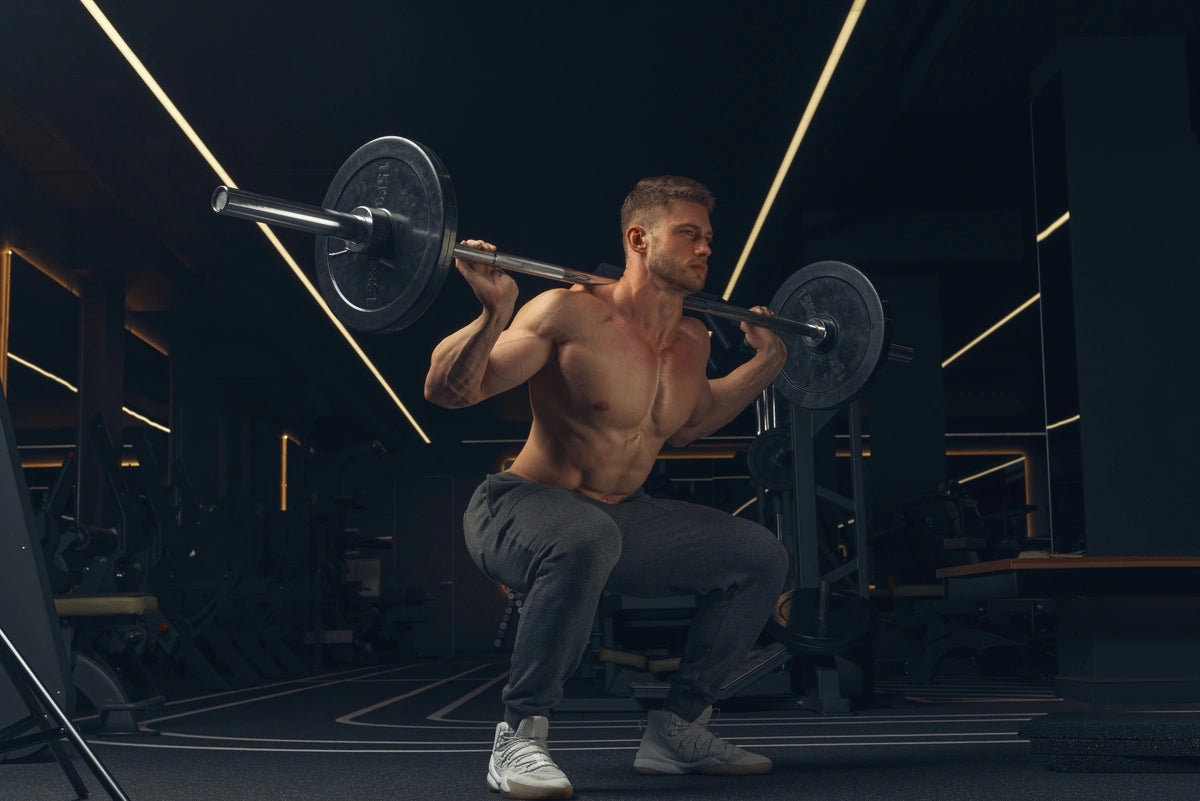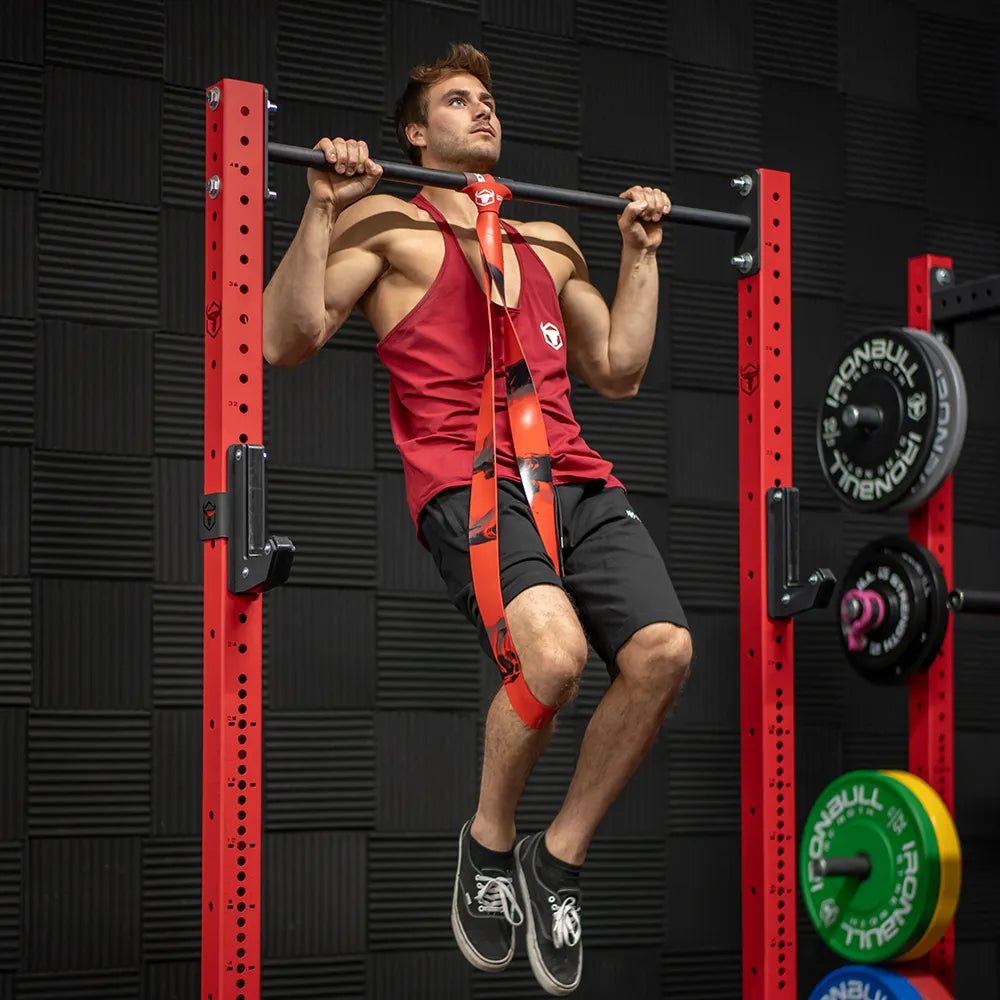What Muscles Do Squats Work?

The squat is considered by many strength athletes and trainers as the king of lower body exercises. Some will go as far as to say that if you were to do only one exercise, squats would be the choice that served you best.

Beginners and people that don’t follow fitness may not know all the benefits that come from working with squats. Therefore, they may not have a full appreciation for all the benefits they can provide. Let’s address that problem and provide the solution by diving into this movement and sharing all the potential it has for fitness enthusiasts of all disciplines, regardless of their goals.
How to do the Squat
Before we dive into what the squat does for you, we should briefly cover how to do it. We will cover the barbell squat first and discuss other variations a little later. If you happen to be close to a barbell and squat rack, follow this approach so you know how to perform the exercise correctly.
Speaking of which, if you happen to be in the market for a quality barbell and squat rack, look no further than our bars and racks sections here on Iron Bull Strength. We have the best products for your home gyms at the best prices for your budget.
Set the barbell up inside the rack onto the J-hooks so you have to lower your head to place the barbell on the back of your shoulders. The safety arms should be positioned so you can drop the weight behind you to minimize the risk of getting injured should you not be able to stand with the weight you use.
Grab the barbell at a comfortable grip that is wider than shoulder width. Lower your head under the barbell so you can position it on the back of your shoulders comfortably. Do not place it on your neck. Move your feet under the bar as well so you can stand to un-rack the weight.
Stand tall with the bar on your shoulders while maintaining a strong grip to unrack it from the J-hooks. Take three or four steps back to position your feet at least shoulder-width apart or slightly wider if you feel more comfortable. Look straight ahead or slightly down while bracing your core for the exercise. Make sure your feet are even and flat on the floor.
Take a deep breath in and bend at the hips to lower yourself down into a squat position. This is also known as “going into the hole.” Your knees will bend as well. Do your best to not lean forward with the barbell while descending into the bottom. Once your hips are even with your knees, push through your feet and try to push your back into the barbell to return to the standing position.
Once you finished your set, return the barbell to the rack. Make sure it is completely in the J-hooks before letting go and coming out from under the barbell.
Primary Muscles Worked
If you tried that, then you likely noticed that the legs were doing some serious work throughout your duration performing the exercise. Here were the muscles that were helping you move that weight.
Quadriceps
The quads are the muscles on the front of the thigh, and they are made up of four individual muscles - the rectus femoris, vastus lateralis, vastus medialis, and vastus intermedius. They are responsible for knee flexion, and they will be working as you return to the standing position at the bottom of the squat.
Glutes
Many people think of the glutes as just the gluteus maximus, but there are also the gluteus medius and minimus as well. All three will be involved because they have to help you rise from the bottom position to come up with the weight. Your foot position will play a role in how active they are, and we will cover that a little later.
Hamstrings
Both heads of the hamstrings (semitendinosus and semimembranosus) are actively involved in the hip extension while you are standing. They will also support you while you are going down into the squat.
Secondary Muscles Worked
Those are the muscles that will reap the most benefits from squatting, but they are not alone. No film is complete without a supporting cast, and the squat is what it is thanks to secondary muscle groups.
Back
The entire back from top to bottom is helping provide stability throughout the range of motion. The upper back and rear delts are keeping the barbell in place along with your grip, while your lower back, including the spinal erectors, is bracing and assisting as you return to the standing position.
Core
The “core” in this context refers to the abdominals, obliques, and even the transverse abdominis that lies deep within. If this is not tight and solid, your body could round forward, which would put your entire body in a compromised position to fail.
Arms
The triceps aren’t very active here, but the biceps and forearms are what will help you keep the bar on your shoulders and prevent it from moving around during your set.
Calves
No, you won’t be doing a calf raise during the squat, but ankle flexion is involved, and the calves are key for that to happen. You won’t get super big calves from squatting alone, nor will calf raises help your squat go up, but make sure you train them so they are ready to help you execute the squat correctly.
Benefits of Squatting
Squats are a very challenging exercise, and that is why a lot of trainees avoid it, but the benefits that come with doing some form of a squat make them worth the commitment.
Activities of Daily Living (ADL) - Every time you sit and stand, you’re doing a squat. You also perform a similar motion when lifting something to move it. Squatting can help decrease the risk of injury when performing these activities.
Size and Strength - Any strength athlete should be doing some form of squat because they will help with both physique development and performance. Whether you need strong legs for a race or competitive fitness event, entering a powerlifting meet, or building your legs for a bodybuilding show, the squat is your friend.
Variations and Ways to Target Specific Muscles
Once you get proper form down, you can add different versions of squats into the routine that may be more challenging or address specific needs you have. You can squat at home or in the gym. Here are a few you can try out for yourself.
Jump Squats - Along with the other primary muscles, these can also directly target the calves. Dumbbells are recommended for this, and you would hold them down to your sides. Perform the squat motion, then jump as high as you can. Reset your feet and repeat.
Sumo Squat - If you want to target the inner thighs, then you would perform the squat with a much wider stance. The wider the feet are, the more active the abductors are.
Pause Squat - If you stop at the bottom of the squat position briefly, the quadriceps, glutes, and adductors are going to be working harder to help you return to the standing position. This is a great way to build strength as well as size.
Squat Machine - There are many gyms that have either a Smith Machine or specific squat machine. These won’t require as much stability as a free weight version, but they will still make you work. If you feel uncomfortable squatting with free weight, start with machines and evaluate your progress before changing to other options.
Conclusion
If you want to meet your physical potential, then squats are a must for your workout program. You can train with heavy weight for low reps to increase power, go moderately heavy to build muscle, or even opt for lighter weight and challenge your endurance. Regardless of the method you choose, you will be better off for adding squats into the routine, and now that you know more about how they work, you can feel more confident doing them during your next training session.











